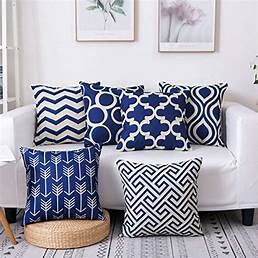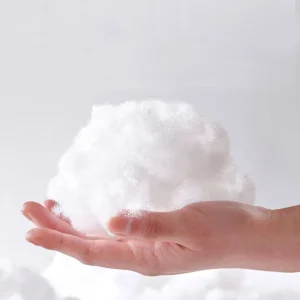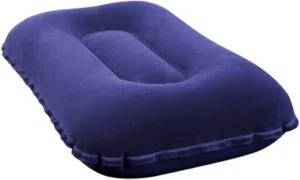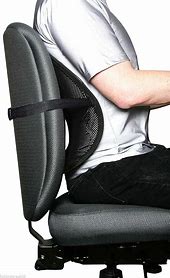Cushions, those soft, supportive accessories we often take for granted, have a fascinating history and come in an astonishing array of styles, types, sizes, shapes, and materials. From enhancing our comfort on a couch to adding a touch of elegance to our living spaces, cushions play an indispensable role in our daily lives. In this article, we’ll explore the rich history of cushions, delve into the various styles and types available, discuss their sizes, shapes, materials, and offer essential dos and don’ts when purchasing them.
A Brief History
Cushions have been part of human civilization for centuries, with evidence of their use dating back to ancient Egypt and Mesopotamia. Initially, cushions were made from stone or wood and were primarily used to provide support and comfort while sitting or reclining. As civilizations progressed, cushions evolved, incorporating softer materials like wool, feathers, and eventually, textiles. In medieval Europe, cushions became symbols of status and luxury, adorned with intricate embroidery and precious fabrics.
Style and Types of Cushions:
The difference between the style and type of a cushion lies in their respective characteristics and purposes:
Style:
- Style refers to the aesthetic appearance or design of the cushion.
- It encompasses elements such as colour, pattern, texture, and embellishments.
- The style of a cushion determines its decorative impact and how it complements the overall aesthetic of a space.
- Examples of styles include bohemian, vintage, minimalist, embroidered, geometric, and personalized cushions.
Type:
Type refers to the construction, function, and purpose of the cushion.
- It describes the specific features, materials, and intended use of the cushion.
- The type of a cushion influences its comfort, support, and suitability for various settings.
- Examples of types include foam cushions, feather-filled cushions, memory foam cushions, lumbar cushions, outdoor cushions, and inflatable cushions.
while the style of a cushion focuses on its visual appeal and decorative attributes, the type of a cushion relates to its structural composition, functionality, and practical use. Both aspects contribute to the overall comfort, aesthetics, and suitability of cushions for different environments and preferences.
Styles of Cushions:
Cushions come in a plethora of styles, each offering its unique aesthetic and functionality. Here are ten examples:

Throw Cushions: These are decorative cushions typically placed on sofas, chairs, or beds to add visual interest and comfort.

Floor Cushions: Large, often square or rectangular cushions designed for sitting or lounging directly on the floor.

Embroidered Cushions: Cushions adorned with intricate embroidery, adding elegance and texture to any space.

Bohemian Cushions: Characterized by vibrant colours, eclectic patterns, and textured fabrics, these cushions bring a relaxed, boho-chic vibe to interiors.

Geometric Cushions: Featuring geometric patterns such as stripes, chevrons, or triangles, these cushions add a modern touch to any room.

Vintage Cushions: Inspired by retro designs, vintage cushions evoke nostalgia with their faded colours, floral prints, and rustic textures.

Knitted Cushions: Made from knitted fabrics, these cushions offer warmth and cosiness, perfect for winter months.

Minimalist Cushions: Simple and understated, these cushions feature clean lines and neutral colours, ideal for contemporary interiors.

Personalized Cushions: Customized with photos, quotes, or monograms, these cushions make thoughtful gifts and cherished keepsakes.
Types of Cushions
Beyond their style, cushions also vary in their construction and purpose. Here are ten types of cushions:

Foam Pillows: These Pillows are filled with high-density foam, providing firm support and retaining their shape over time.

Feather-filled Cushions: Filled with feathers or down, these cushions offer a luxurious, soft feel but require regular fluffing to maintain their loft.

Memory Foam Pillows: Contouring to the shape of the body, memory foam pillows provide excellent support and pressure relief.

Polyester-filled Cushions: Affordable and hypoallergenic, polyester-filled cushions are lightweight and easy to care for.

Gel Cushions: Ideal for relieving pressure points, gel cushions contain a layer of gel that distributes weight evenly and stays cool.

Inflatable Cushions: Perfect for travel or outdoor activities, inflatable cushions can be easily inflated and deflated for compact storage.

Lumbar Cushions: Designed to support the lower back, lumbar cushions help alleviate back pain and improve posture.

Wedge Cushions: Featuring a triangular shape, wedge cushions are often used to elevate the upper body or legs for improved circulation and comfort.
Size, Shape, and Materials
Cushions come in various sizes and shapes to suit different furniture pieces and preferences. Common sizes include square (16×16 inches), rectangular (12×20 inches), and round (16 inches in diameter). Shapes range from traditional squares and rectangles to more unconventional shapes like cylinders or bolsters.
When it comes to materials, cushions can be made from a wide range of fabrics and fillings, each with its pros and cons:
Cotton: Breathable and easy to clean, but prone to wrinkling and fading.
Linen: Durable and naturally antibacterial, but may wrinkle easily and require ironing.
Velvet: Luxurious and soft to the touch, but can attract pet hair and be challenging to clean.
Leather: Stylish and durable, but expensive and may require special care to maintain.
Synthetic Fabrics (Polyester, Nylon): Affordable and stain-resistant, but less breathable than natural fibres.
Down: Provides exceptional softness and insulation, but may trigger allergies and requires frequent fluffing.
Foam: Offers firm support and retains its shape, but may degrade over time and emit a chemical odour initially.
Dos and Don’ts When Purchasing Cushions
When shopping for cushions, consider the following dos and don’ts to ensure you find the perfect ones for your needs:
Do:
- Do consider the intended use and location of the cushions.
- Do invest in high-quality materials for longevity and comfort.
- Do mix and match different styles and textures for visual interest.
- Do test the firmness and supportiveness of the cushions before purchasing.
- Do check the care instructions to ensure easy maintenance.
Don’t:
- Don’t sacrifice comfort for style; prioritize both aspects when selecting cushions.
- Don’t overlook the importance of proper sizing and proportions.
- Don’t forget to consider the existing décor and colour scheme of your space.
- Don’t overlook the fillings; choose materials that suit your preferences and needs.
- Don’t hesitate to seek professional advice or consult reviews before making a purchase.
In conclusion, cushions are not merely accessories but essential elements that enhance comfort, style, and functionality in our homes. With their rich history, diverse styles, types, sizes, shapes, and materials, there’s a perfect cushion for every space and preference. By following the dos and don’ts outlined in this guide, you can make informed decisions and create inviting, comfortable environments that reflect your personal taste and lifestyle.




